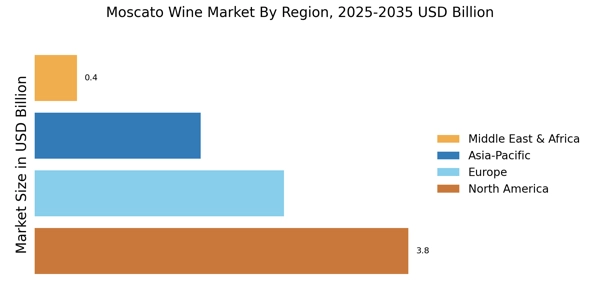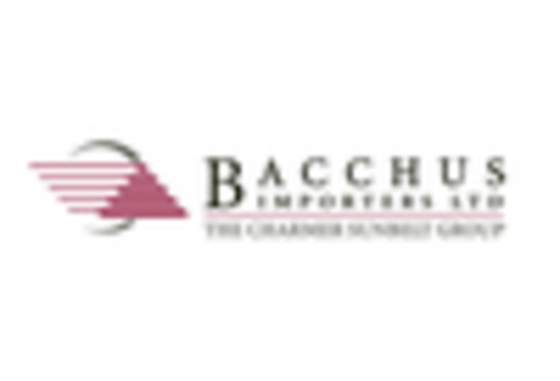Innovative Marketing Strategies
The Moscato Wine Market is increasingly adopting innovative marketing strategies to capture the attention of a diverse consumer base. With the rise of digital marketing and social media, brands are leveraging these platforms to engage with consumers in novel ways. Campaigns that highlight the unique characteristics of Moscato, such as its sweetness and versatility, are becoming more prevalent. Data suggests that brands utilizing social media marketing have seen a 25% increase in engagement rates. This shift towards creative marketing approaches not only enhances brand visibility but also fosters a deeper connection with consumers. As the Moscato Wine Market continues to evolve, the implementation of targeted marketing strategies is likely to play a crucial role in driving sales and expanding market share.
Growing Interest in Wine Tourism
The Moscato Wine Market is poised to benefit from the growing interest in wine tourism, which has become a popular activity for many consumers. Wine enthusiasts are increasingly seeking experiences that allow them to explore vineyards and wineries, particularly those known for producing Moscato. This trend is supported by data showing that wine tourism has grown by approximately 10% annually, with many travelers specifically seeking out regions renowned for their sweet wines. As wine tourism continues to flourish, it presents an opportunity for the Moscato Wine Market to engage with consumers on a personal level, fostering brand loyalty and enhancing the overall wine experience. Wineries that offer tastings, tours, and educational experiences about Moscato production are likely to attract more visitors, thereby boosting sales and brand recognition.
Increasing Demand for Sweet Wines
The Moscato Wine Market is experiencing a notable increase in demand for sweet wines, particularly among younger consumers. This demographic shift is characterized by a preference for sweeter, fruit-forward wines, which Moscato epitomizes. According to recent data, sweet wines, including Moscato, have seen a rise in sales, with a reported growth rate of approximately 15% over the past year. This trend suggests that the Moscato Wine Market is well-positioned to capitalize on the evolving tastes of wine drinkers, particularly millennials and Generation Z, who are increasingly seeking approachable and enjoyable wine options. As these consumers prioritize flavor profiles that are less tannic and more aromatic, the Moscato segment is likely to expand further, potentially leading to increased production and marketing efforts tailored to this audience.
Health Consciousness Among Consumers
The Moscato Wine Market is witnessing a shift in consumer behavior towards health consciousness, which is influencing wine choices. Many consumers are becoming more aware of the health implications of their dietary choices, including alcohol consumption. Moscato, often perceived as a lighter and lower-alcohol option compared to other wines, is gaining traction among health-conscious individuals. Recent surveys indicate that approximately 30% of wine drinkers are actively seeking lower-calorie and lower-alcohol options, which positions Moscato favorably within this trend. This growing awareness suggests that the Moscato Wine Market may experience increased demand as consumers prioritize wines that align with their health goals while still providing a pleasurable drinking experience.
Expansion of Wine Distribution Channels
The Moscato Wine Market is benefiting from the expansion of distribution channels, which enhances accessibility for consumers. Retailers are increasingly recognizing the potential of Moscato wines, leading to their inclusion in a wider array of outlets, from supermarkets to specialty wine shops. Recent statistics indicate that the number of retail locations offering Moscato has increased by over 20% in the last year. This expansion not only facilitates greater consumer access but also encourages trial among new customers who may not have previously considered Moscato. Furthermore, the rise of e-commerce platforms has allowed for direct-to-consumer sales, further broadening the reach of Moscato wines. This trend indicates a promising future for the Moscato Wine Market, as increased availability is likely to drive sales and foster brand loyalty among consumers.


















Leave a Comment